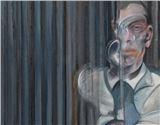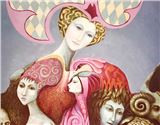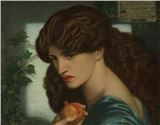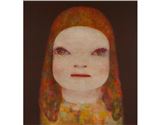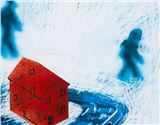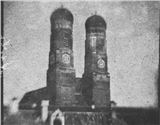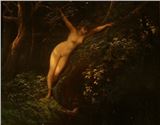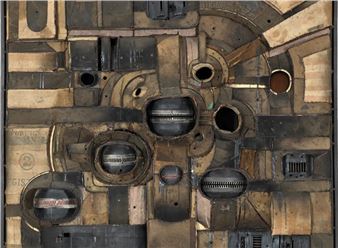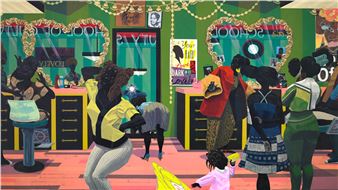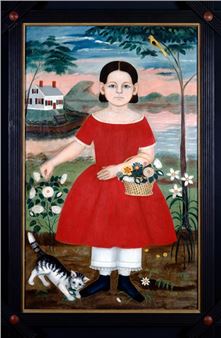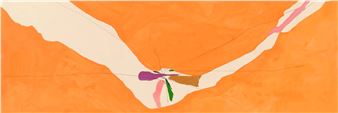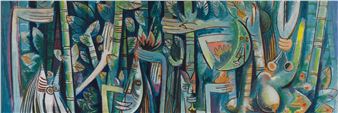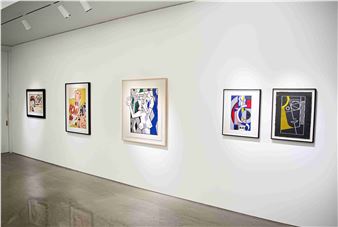Compass: Folk Art in Four Directions
New York City has a rich history largely tied to its thriving harbor activities and developing urban environment. The American Folk Art Museum responds to this context through a lively sampling of artworks from the collection that speaks to both the romanticism and gritty realism of the seaport district. The exhibition ÔÇ£Compass: Folk Art in Four DirectionsÔÇØ is installed in four galleries of Schermerhorn Row, the mercantile block that was developed between 1810 and 1812 by Peter Schermerhorn, scion of a family of shipmasters and chandlers. Six counting houses were built on landfill with the intention of serving the ship trade, the market economy, and compatible small business of the time. Throughout its history the Row experienced and survived the major expansion of the seaport district in both architecture and importance as a major trading and commercial center. The Row housed various concerns through the nineteenth century, including counting houses, mercantile and fancy goods businesses, coffeehouses, restaurants, and hotels for locals and travelers. The American Folk Art Museum celebrates this history through four themes that instigate a visual dialogue about moments in the life of Schermerhorn Row and the seaport.
In the early years of the seaport district, the world was still a vast enigma, and tales of far-off places stirred the imagination. Commercial expeditions yielded exotic goods while ordinary seamen were granted opportunities to experience customs and landscapes very different from their own. Exploration delves into the perils and rewards of lengthy voyages, the urge to explore, and the yearning for loved ones left on shore. Social Networking reflects on the RowÔÇÖs history as a coffeehouse and inn. Social networking was part of the coffeehouse scene from its earliest origins, providing the perfect nexus for business and social interactions, as well as solitary musings over a cup of coffee. Shopping focuses on the wealth of staple and fancy wares that were available in this thriving commercial district with shops, open markets, and diverse activities aimed at both traveler and local. The exhibition concludes with Wind, Water & Weather, artworks that respond to environmental aspects of the seaport: images of seagoing vessels and harbor activities, weathervanes that indicated wind direction, and outdoor trade carvings that show the effects of weathering by the elements.

Recommended for you
New York City has a rich history largely tied to its thriving harbor activities and developing urban environment. The American Folk Art Museum responds to this context through a lively sampling of artworks from the collection that speaks to both the romanticism and gritty realism of the seaport district. The exhibition ÔÇ£Compass: Folk Art in Four DirectionsÔÇØ is installed in four galleries of Schermerhorn Row, the mercantile block that was developed between 1810 and 1812 by Peter Schermerhorn, scion of a family of shipmasters and chandlers. Six counting houses were built on landfill with the intention of serving the ship trade, the market economy, and compatible small business of the time. Throughout its history the Row experienced and survived the major expansion of the seaport district in both architecture and importance as a major trading and commercial center. The Row housed various concerns through the nineteenth century, including counting houses, mercantile and fancy goods businesses, coffeehouses, restaurants, and hotels for locals and travelers. The American Folk Art Museum celebrates this history through four themes that instigate a visual dialogue about moments in the life of Schermerhorn Row and the seaport.
In the early years of the seaport district, the world was still a vast enigma, and tales of far-off places stirred the imagination. Commercial expeditions yielded exotic goods while ordinary seamen were granted opportunities to experience customs and landscapes very different from their own. Exploration delves into the perils and rewards of lengthy voyages, the urge to explore, and the yearning for loved ones left on shore. Social Networking reflects on the RowÔÇÖs history as a coffeehouse and inn. Social networking was part of the coffeehouse scene from its earliest origins, providing the perfect nexus for business and social interactions, as well as solitary musings over a cup of coffee. Shopping focuses on the wealth of staple and fancy wares that were available in this thriving commercial district with shops, open markets, and diverse activities aimed at both traveler and local. The exhibition concludes with Wind, Water & Weather, artworks that respond to environmental aspects of the seaport: images of seagoing vessels and harbor activities, weathervanes that indicated wind direction, and outdoor trade carvings that show the effects of weathering by the elements.
Artists on show
Contact details


 ARTISTS
ARTISTS
